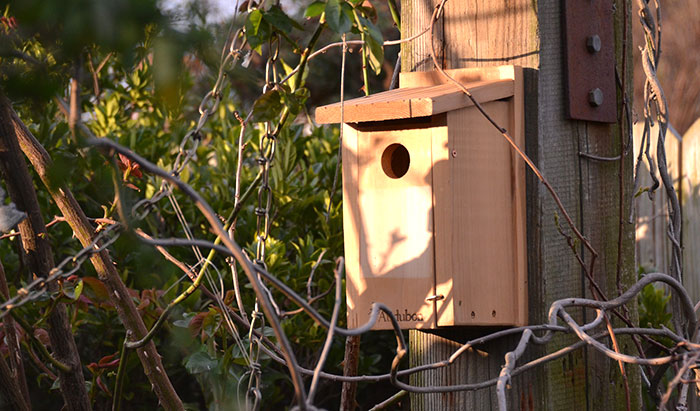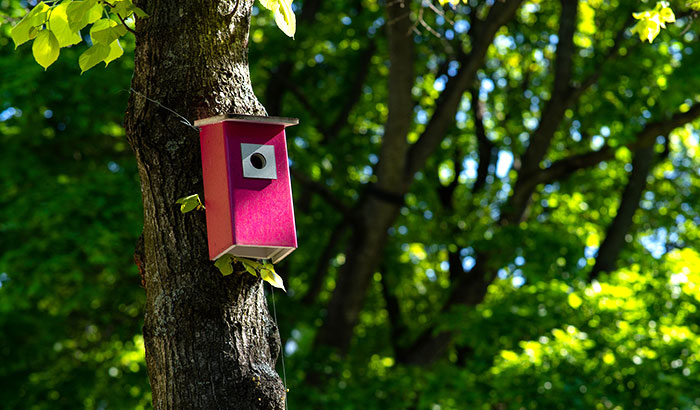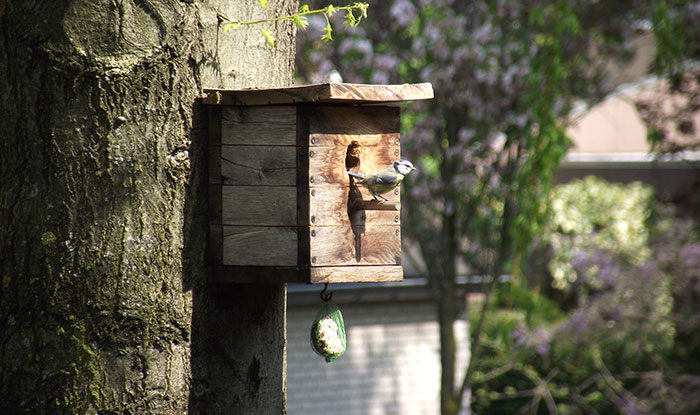Making your birdhouse safe, comfortable, and ideal for birds’ survival requirements makes it attractive to various bird species that use nest boxes. Besides providing nesting birds with water, food varieties, and shelter, ensuring the birdhouse is situated in a private spot away from the noise, and danger lures them the most.
Knowing the bird species that are likelier to use nest boxes, making your garden enticing to nesting winged guests, and ensuring it’s appropriate for different birds make you the perfect bird keeper.
Delve into the topic about “How to Attract Birds to a Birdhouse” and leaf through the helpful guides in the rest of this post.
Steps to Attract Birds to a Birdhouse
Are you curious about how to get birds to use a birdhouse? Building an attractive birdhouse isn’t enough because you must first know the bird species that use nest boxes.
Did you know that approximately 30 bird species in a country’s region usually use a birdhouse? Known as “cavity nesters,” chickadees, purple martins, house and tree sparrows, house wrens, and bluebirds are frequent birdhouse guests.
Other bird types likelier to use nest boxes include screech owls, titmice, wood ducks, nuthatches, and woodpeckers. Once you know the bird types you want to keep in your birdhouse, the following steps are also essential to consider:
Choosing the Right Birdhouse Design and Location
Since different bird species require unique habitats, picking the appropriate nesting place is vital. For instance, position the nest box you intend for bluebirds in a location surrounded by or facing an open field. This spot is perfect for bluebirds because they can eat more fresh insects and have something to offer to their offspring.
Meanwhile, purple martins prefer birdhouses on tall poles amidst open fields or lawn areas. Place the nest box in a stand or thicket of tiny shrubs and trees to attract chickadees.
As for tree swallows, place the birdhouse near wet spots, where it’s easier to locate aquatic insects for them and their offspring. It’s best if you avoid positioning the nest box away from feeding stations.
Lastly, a birdhouse close to woody vegetation attracts house wrens the most.
When it comes to birdhouse designs, the best material to use is wood. Drainage holes on the nest box’s flooring and excellent ventilation on its top are also a must to keep birds. Apart from these, knowing the preferred nesting haven designs of different bird species is also crucial.
For instance, prepare one-room shelters for bluebirds, tiny and single dwellings for house wrens, and multiple nesting grounds or apartment-style nesting spots for purple martins
Providing Food
One great way to keep nesting birds in your birdhouse is to provide them and their young with various natural foods. For example, offer specialized bird food to lure specific winged guests, such as mealworms for bluebirds and suet for woodpeckers.
On the other hand, if you don’t have specific birds you want to attract, preparing black oil sunflower seeds will infallibly lure more nest box inhabitants.
Offering Water
All living creatures require clean water to drink and bathe in. Therefore, providing nesting birds with sufficient water they need to thrive will make them permanent dwellers in your birdhouse. Place standard bird baths or fountains to attract more nesting birds. Bird baths with light-catching sparkles and moving water sounds attract birds to a birdhouse.
Creating a safe environment
Shrubbery birdhouses that contain various native plants or evergreens are the most appealing shelters for many nesting birds. Birds use dried leaves, plant down, twigs, and mosses as nesting materials and they stash in shrubs and brush piles to protect themselves from inclement weather, predators, and other threats.
Creating a birdhouse that is in a danger-free zone and ideal for food and water provision will attract more permanent settlers.
Observing bird behavior
We mistakenly think closely monitoring nesting bird behaviors does no good, as it disturbs them. However, some bird experts disclose that checking on your birdhouse dwellers is a practical approach to ensure things are going well.
Keep an eye on the nesting birds in a discreet manner. Conduct the cleaning once or twice weekly, and only make quick visits and checkups. Recording your observation is advantageous. Use a journal or mobile app to record your birdhouse settlers’ behaviors.
What to put in a Birdhouse to Attract Birds?
Most bird species are naturally impressed by plants, shrubs, and trees, as these serve as hiding spots when predators arrive.
Hence, it’s best to grow various plants and shrubs in your garden. With colorful flowers and plants thriving in your garden, you’ll be pleased to see plenty of nesting birds occupying your birdhouse.
Clean and Maintain the Birdhouse Regularly
Birdhouses are prone to attracting spiders, parasites, insects, and other microorganisms that could harm young birds. Cleaning the nest box once the nesting bird has entirely left is indispensable. Deep cleaning the birdhouse is beneficial, and the perfect times to do so are:
- After the nesting brood fledges
- Before storing the nest box in autumn
- Before nesting begins in spring
Use large Perches & Entrance Holes
As for entrance holes, too-small holes are ideal if you want to lure your preferred bird species to use the birdhouse. Meanwhile, large holes are fitting for attracting more aggressive feathered creatures to nest.
As for perches, their diameter should match the size of the nesting bird, allowing a comfortable and firm grasp or grip.
It’s worth noting that the varying sizes of perches are excellent in enabling birds to choose which one offers them the utmost comfort and provides more exercise opportunities.
Use external Features, such as Nesting material & Perch ideas
Suitable nesting materials can make the birdhouse more appealing to nesting birds. Some best nesting materials include dried leaves, feathers, moss, dried twigs, dry grass, pine needles, cottonwood down, bark strips, and cattail fluff.
Meanwhile, the best perches you can use for your birdhouse include ropes made of untreated cotton or hemp or plastic perches that are durable and effortless to clean. You may also pick natural wood, wood branches, cement, or single ceramic perches.
Wrap-up
In creating the appropriate birdhouse for your garden, always consider the types of nesting birds you want to attract. From there, design the birdhouse in a safe environment and provide all the nesting requirements of your birdhouse dwellers. Use suitable materials, follow the correct size of the entrance hole, drainage, and ventilation, and add nesting materials and perches.
By keeping all these considerations in mind, you’ll create a safe and suitable sanctuary for various bird species. Did you find our post about “How to Attract Birds to a Birdhouse” helpful for your nesting birds’ needs? Please do us a favor and share this article with your followers!





